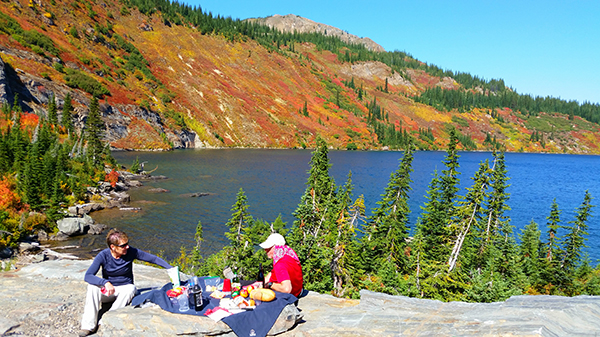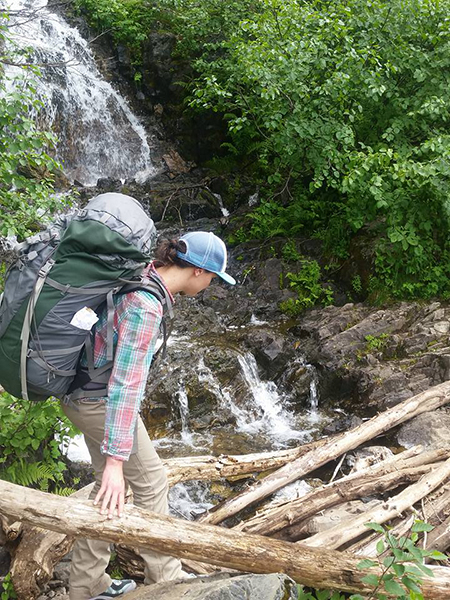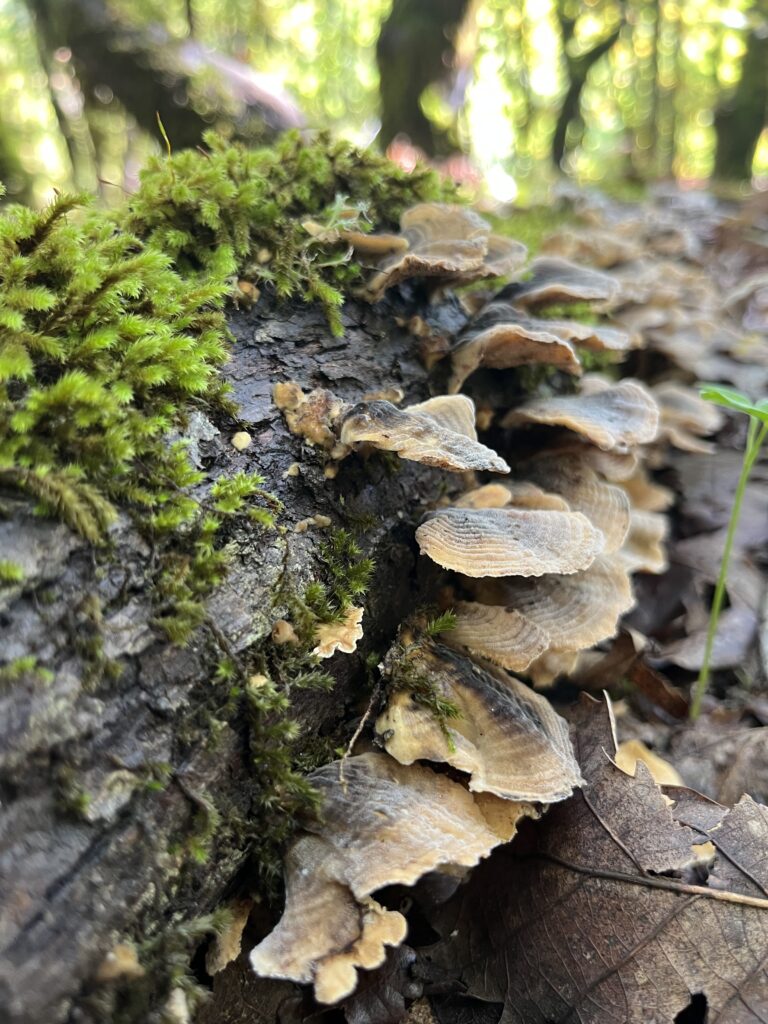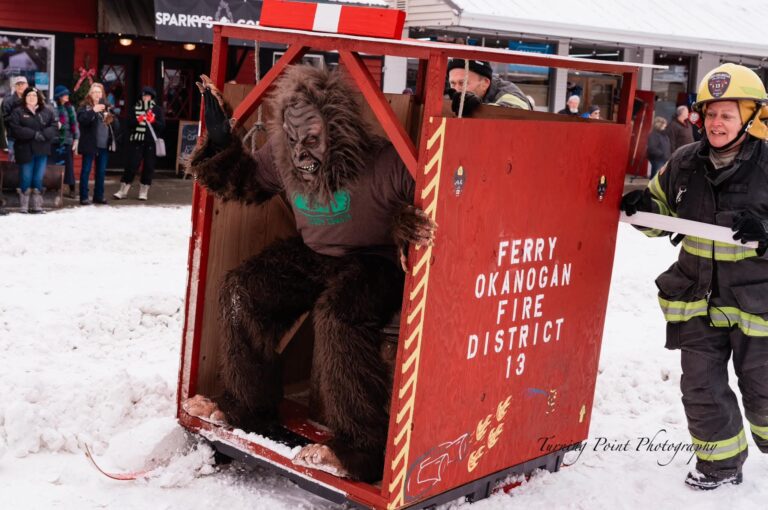North Idaho’s Silver Valley, a narrow, 40-mile-long valley that stretches from 4th of July Pass east of Coeur d’Alene to Lookout Pass near the Montana state line, is thriving these days as a hub for outdoor adventure. It boasts the longest gondola in North America, two big ski resorts, the Northwest’s best bike park, world-class rail trails, including the Route of the Hiawatha and Trail of the Coeur d’Alenes, a waterpark, a golf course, a zipline, multiple craft breweries, and thousands of acres of public lands with trails to explore. But not that long ago, “the valley,” as the locals call it, was much more well known for what lied underground than for the natural beauty and outdoor activities that today attract thousands of visitors and drive a growing segment of the local economy.
Back in the 1970s, over half of the nation’s silver production was pulled from the aptly-named Silver Valley. The prosperity that came along with this boom makes it hard to believe that the valley’s two largest towns, Wallace and Kellogg, were nearly devastated by one of the West’s worst natural disasters, the Big Burn of 1910, which burned over three million acres of forest. The mining-driven economic expansion that helped re-build the valley’s communities after the fire came with a hidden price tag that eventually had to be reckoned with.

In 1983, the Bunker Hill Mine near Kellogg was named one of the most polluted places in the nation and declared a Superfund Site. Almost overnight, several mines closed, and the economy of the surrounding area struggled. Many jobs were lost, and cleanup work to address the heavy metals that had contaminated surrounding forests and waterways began. Just like the days following the Big Burn, many locals questioned whether their home would ever recover.
Idaho wasn’t even a state when Noah Kellogg discovered some of the rich ore in the valley, and according to some legends, his donkey actually found the huge outcropping of galena (lead ore) while he was sleeping. Soon enough, mining claims sprouted like dandelions, and a new railroad line made it possible to move large loads anywhere on the continent. At its peak, the federal government recognized over 100 mines stretching from the Cataldo Mission to Mullan near Lookout Pass. Construction of the St. Paul Pass Tunnel, for the Milwaukee Road, began in 1907, and crews started working from both approaches on the Idaho-Montana border. This 1.6-mile underground project occurred late in the historical era of American continental railroads, and the Milwaukee Road was the last transcontinental line built. However, if they hadn’t finished the tunnel (later renamed the Taft Tunnel after then, Vice-President Taft) before the Big Burn annihilated the region, there’s little chance the railroad line would have been completed. Now, over a century later, this tunnel is one of the hallmarks for arguably the best rails-to-trail routes in America, the Route of the Hiawatha.
Powder Playgrounds, World-class Trails, and Historical Attractions
The Silver Valley’s rich mining and railroad history can still be explored today by outdoor recreation enthusiasts. Kellogg’s original ski area, Jackass Ski Bowl, was first owned by a major valley mining interest, the Bunker Hill Company. Later renamed Silverhorn, and eventually Silver Mountain Resort, the city of Kellogg took over the ski area in 1984. In 1996, Eagle Crest Partners, a resort development company based in Redmond, Ore., identified the area as an investment opportunity. Several factors attracted them, including the site’s location next to Interstate 90, plus it featured existing ski resort infrastructure. The site also boasted the longest gondola ride in North America. Eagle Crest Partners purchased the property in 1996. The new owners started resort development and refurbishment of existing infrastructure in 2004 and added a snow tubing park in 2006, a waterpark in 2008, and a golf course in 2010.

Of course, no matter how many amenities Silver Mountain adds, the fact remains that Lookout Pass Ski & Recreation Area came first. While the valley’s two resorts aren’t locked in a feud, they do compete for lift ticket sales. Lookout Pass opened in 1935 and operates under a special use permit from the U.S. Forest Service. Like Silver Mountain, Lookout has also expanded its terrain with more planned in the near future. Lookout’s claim to fame is its superior snowfall, which often exceeds 350 inches per year. Without a doubt, Lookout Pass is a powder skier’s dream.
In the summer, Lookout Pass maintains concessions for the Route of the Hiawatha rail trail. Whereas other bike paths are do-it-yourself, this bike route provides unique stops with signs to educate riders about the railroad line. This secluded, all-downhill trail features eleven tunnels and nine super-high trestles, which means many people miss the historical signs and kiosks. Curious riders, however, are rewarded with quality information about this railroad line and a unique time in American history.
After riding the Hiawatha Trail, consider staying the night in Wallace or Kellogg and hiking the Pulaski Tunnel Trail. Ed Pulaski earned the status of a wilderness legend when he miraculously saved 40 members of his firefighting crew during the great fire of 1910, which some estimates suggest destroyed enough timber to build 54,000 four-bedroom homes. After multiple days of hard labor on the fire lines, Pulaski was supervising crews on the west fork of Placer Creek, about five miles south of Wallace, when fire and smoke suddenly consumed the area, overwhelming the crew. Drawing on his knowledge of the terrain, as well as the special dynamics of forest fires, Pulaski led his men (plus two horses) to safety in an abandoned prospect mine. After ordering his crew into the abandoned mine tunnel, he threatened to shoot with his pistol any man who left. Lying prone on the tunnel floor, all but five of the firefighters survived.
The same forest fire hero is also widely credited as the inventor of the Pulaski tool, which combines an axe and an adze in one head and revolutionized forest firefighting around the world. Ed Pulaski further refined the tool by 1913, and it came into popular use throughout the Rocky Mountain region. In 1920, the U.S. Forest Service began contracting for the tool to be commercially manufactured.
If you head out to follow Ed Pulaski’s footsteps on the Pulaski Tunnel Trail, the two-mile course brings hikers to an overlook across the creek from the Nicholson mine—better known as the Pulaski Tunnel—where “Big Ed” saved his fellow fire fighters. Much of the trail is buffered by a thick canopy of vegetation, and hikers can no longer enter the mineshaft due to erosion and the local bat colony. But, it doesn’t take much imagination to recognize the chaos that occurred in 1910 thanks to multiple interpretive signs along the way.
The Silver Valley has spent decades overcoming the stigma of its past, and community boosters are still making headway. The valley’s transition to a hub of outdoor adventure that attracts so many hikers, bikers, and skiers today required decades of hard work and North Idaho grit to overcome major challenges. The region is no longer a gas-station stop between Missoula and Spokane; it’s an Inland Northwest center for skiing, biking, hiking, and outdoor adventure. //
Jon Jonckers is a Senior Editor at Out There Outdoors. He serves on the Board for the Friends of the Centennial Trail, and is co-author for the local guide Climbing The Rocks Of Sharon.
[Feature photo “Waterfall near Burke” courtesy of the Silver Valley Chamber.]













